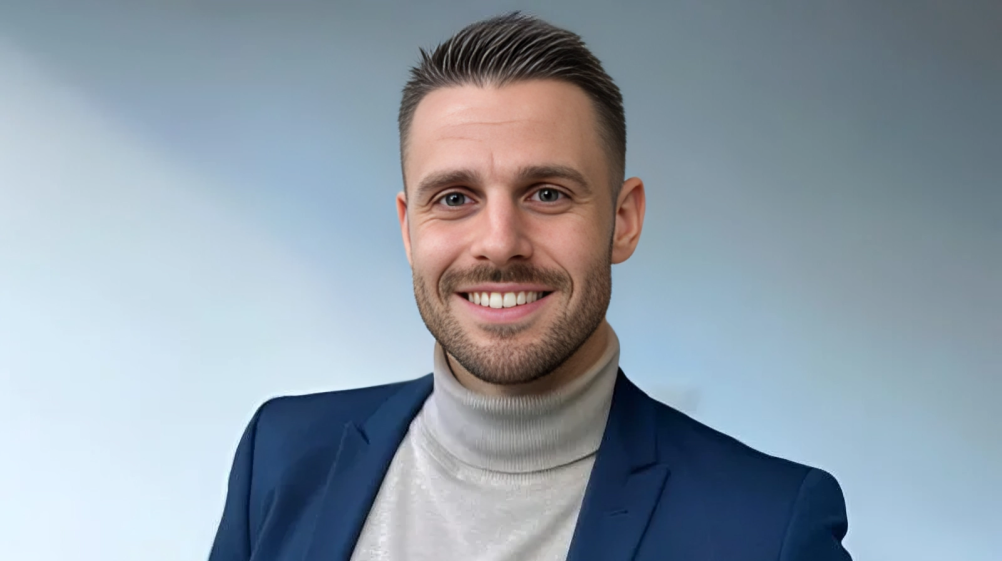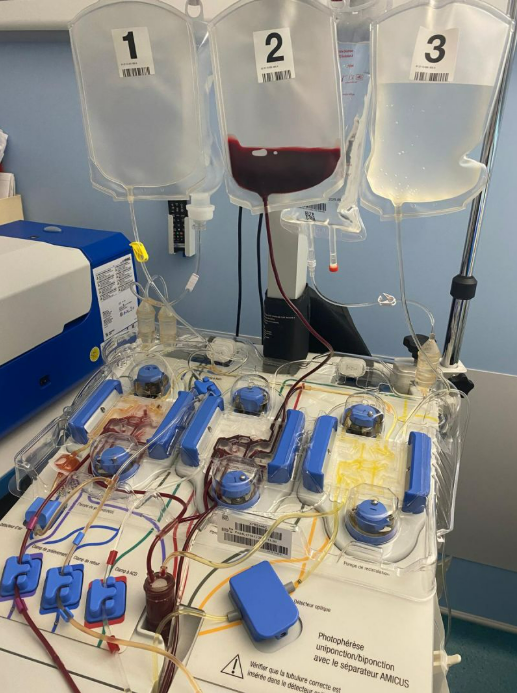
85 Minutes to Better Lives: Maxime Dely on the Power of Time in Photopheresis
Maxime Dely, Sales and Application Specialist in Therapeutic Apheresis and Cell Therapy, posted on LinkedIn:
”85 minutes, no more, for an extracorporeal photopheresis procedure
Last week, during my final week at work, I accompanied a patient throughout her extracorporeal photopheresis session.
We talked, we shared a few stories… and suddenly, the end-of-procedure beep sounded.
Stopwatch in band: 85 minutes. No more
From the start of the procedure to disconnection. Ten minutes later, she was leaving in the ambulance.
Shorter than a football match or an old movie on TV.
For some, this time saving may seem small.
But for the patients’quality of life – and after hearing it directly from them – this gain is a big YES.
Extracorporeal photopheresis (ECP) is a technique used to treat certain immune diseases. It’s a demanding treatment – both medically and emotionally.
So why is this notion of time so important?
Because here, time saved is time given back.
In the centers where I’ve had the privilege to work and support the teams, online ECP has made it possible to save up to two hours compared with other so-called offline techniques.
It’s not just a technical achievement – it’s a real improvement in patient comfort.
An hour and a half less in the hospital means an hour and a half more at home, in one’s own environment, with one’s habits, comfort, and above all, close to loved ones.
And beyond the human benefit, this efficiency has a tangible impact:
- Better bed turnover,
- More available teams,
- And sometimes, one more treatment slot for another patient.
85 minutes, no more.
In photopheresis, as in many other areas of care, time itself is a form of healing.”

Keep up with Hemostasis Today.
-
Dec 6, 2025, 18:02ASH25 Day 1: Don’t Miss The Highlights
-
Dec 6, 2025, 15:44Atul Gupta on Where The Healthcare Innovation is Headed
-
Dec 6, 2025, 15:22Nathan White on How Inflammation Contributes to Coagulopathy After Trauma
-
Dec 6, 2025, 15:02Anas Younes on AstraZeneca’s Aims in Blood Cancer to Be Presented at ASH25
-
Dec 6, 2025, 14:08David Alderman: ASH25 is Live
-
Dec 6, 2025, 13:53Isabelle Mahé Presents The Proposals from INNOVTE CAT Working Group
-
Dec 6, 2025, 11:50Steve Tuplin on Roche’s Mission at ASH25
-
Dec 6, 2025, 11:13Khaled Musallam on The Lancet Haematology Podcast: Your ASH25 Roadmap
-
Dec 5, 2025, 03:46Sreeni Sivan Pillai: Preventing Thrombophlebitis and Upper Limb DVT in PICC Lines
